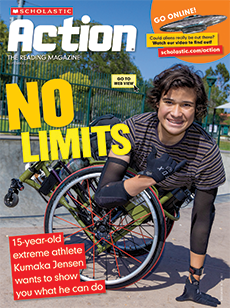Discuss compound words to improve students’ decoding skills.
After reading the article, ask students to think about the word rainforest. Point out that it’s made up of two words: rain and forest. A rainforest is a type of forest that gets a lot of rain.
Explain that rainforest is a compound word, a word made up of two or more words. Let students know that when they encounter an unfamiliar word, one decoding strategy they can use is to see if it’s a compound word that contains a word they already know. Give these examples of compound words and ask students to break them into their parts:
- baseball: base + ball
- cupcake: cup + cake
- doorbell: door + bell
- fingernail: finger + nail
- headache: head + ache
- sidewalk: side + walk
Looking for more ELL support?
Download our full lesson plan and scroll to p. 5 to find questions that will help your ELLs respond to the text at the level that’s right for them.
